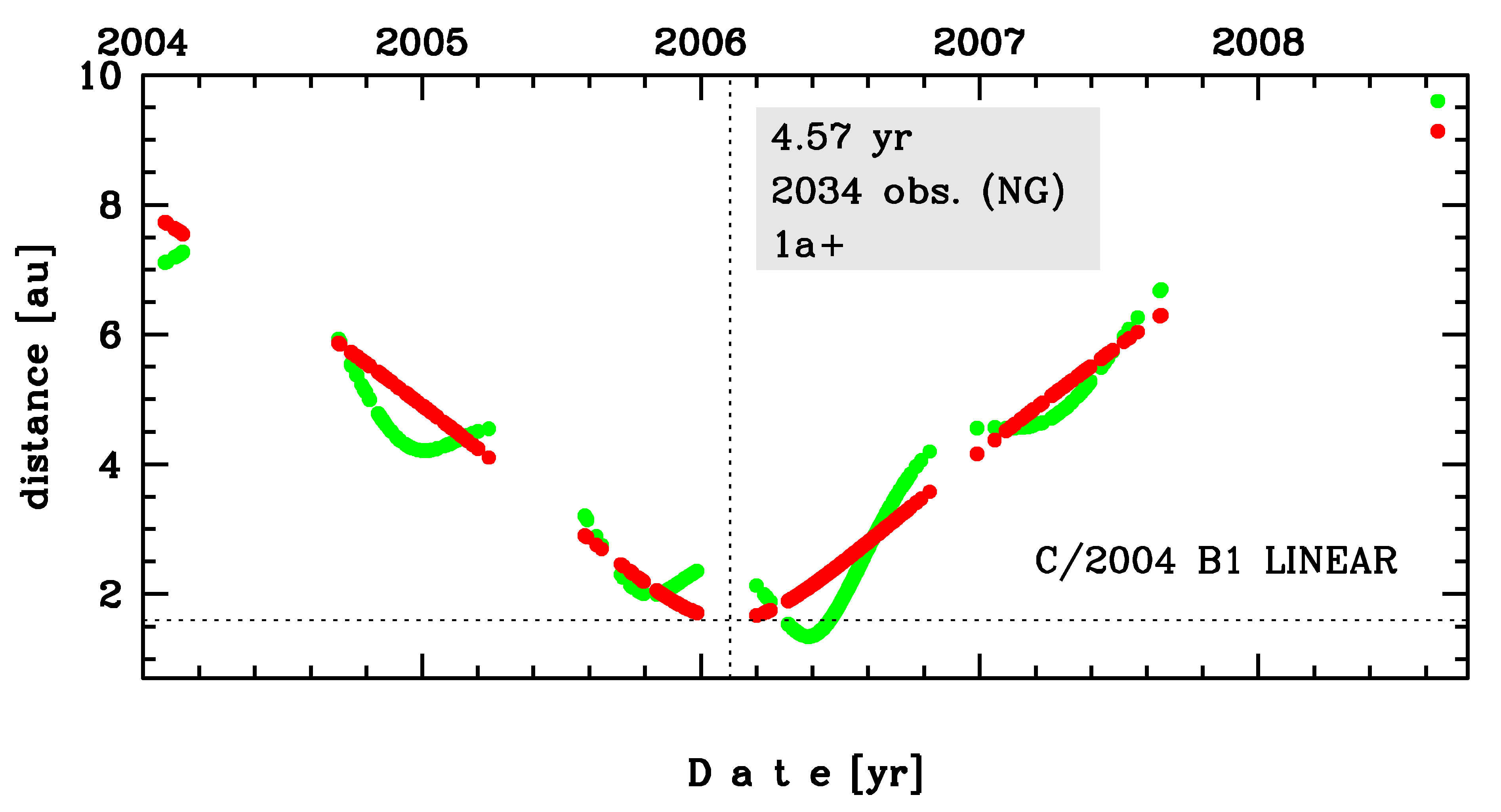C/2004 B1 LINEAR
more info
Comet C/2004 B1 was discovered on 29 January 2004 with Lincoln Laboratory Near-Earth Asteroid Research project; that is more than 2 years before its perihelion passage. A few pre-discovery images taken a day before discovery were found at Haleakala-AMOS. It was observed until 24 August 2008 (see picture).
Comet had its closest approach to the Earth on 21 May 2006 (1.345 au), about 3.5 months after its perihelion passage.
Solutions given here are based on data spanning over 4.57 yr in a range of heliocentric distances: 7.74 au – 1.602 au (perihelion) – 9.15 au
This Oort spike comet suffers moderate planetary perturbations during its passage through the planetary system; these perturbations lead to escape the comet from the planetary zone on a hyperbolic orbit (see future barycentric orbits).
See also Królikowska 2020
Comet had its closest approach to the Earth on 21 May 2006 (1.345 au), about 3.5 months after its perihelion passage.
Solutions given here are based on data spanning over 4.57 yr in a range of heliocentric distances: 7.74 au – 1.602 au (perihelion) – 9.15 au
This Oort spike comet suffers moderate planetary perturbations during its passage through the planetary system; these perturbations lead to escape the comet from the planetary zone on a hyperbolic orbit (see future barycentric orbits).
See also Królikowska 2020
| solution description | ||
|---|---|---|
| number of observations | 2034 | |
| data interval | 2004 01 28 – 2008 08 24 | |
| data type | perihelion within the observation arc (FULL) | |
| data arc selection | entire data set (STD) | |
| range of heliocentric distances | 7.74 au – 1.60 au (perihelion) – 9.15 au | |
| type of model of motion | NS - non-gravitational orbits for standard g(r) | |
| data weighting | YES | |
| number of residuals | 3977 | |
| RMS [arcseconds] | 0.44 | |
| orbit quality class | 1a+ | |
| next orbit statistics, both Galactic and stellar perturbations were taken into account | ||
|---|---|---|
| no. of returning VCs in the swarm | 0 | |
| no. of escaping VCs in the swarm | 5001 | |
| no. of hyperbolas among escaping VCs in the swarm | 5001 | * |
| next reciprocal semi-major axis [10-6 au-1] | -463.07 – -462.29 – -461.51 | |
| next perihelion distance [au] | 6.541 – 6.551 – 6.561 | |
| synchronous stop epoch [Myr] | 0.848 | S |
| percentage of VCs with qnext < 10 | 100 | |
| next_g orbit statistics, here only the Galactic tide has been included | ||
|---|---|---|
| no. of returning VCs in the swarm | 0 | |
| no. of escaping VCs in the swarm | 5001 | |
| no. of hyperbolas among escaping VCs in the swarm | 5001 | * |
| next reciprocal semi-major axis [10-6 au-1] | -463.09 – -462.31 – -461.53 | |
| next perihelion distance [au] | 6.54 – 6.55 – 6.56 | |
| synchronous stop epoch [Myr] | 0.846 | S |
| percentage of VCs with qnext < 10 | 100 | |
